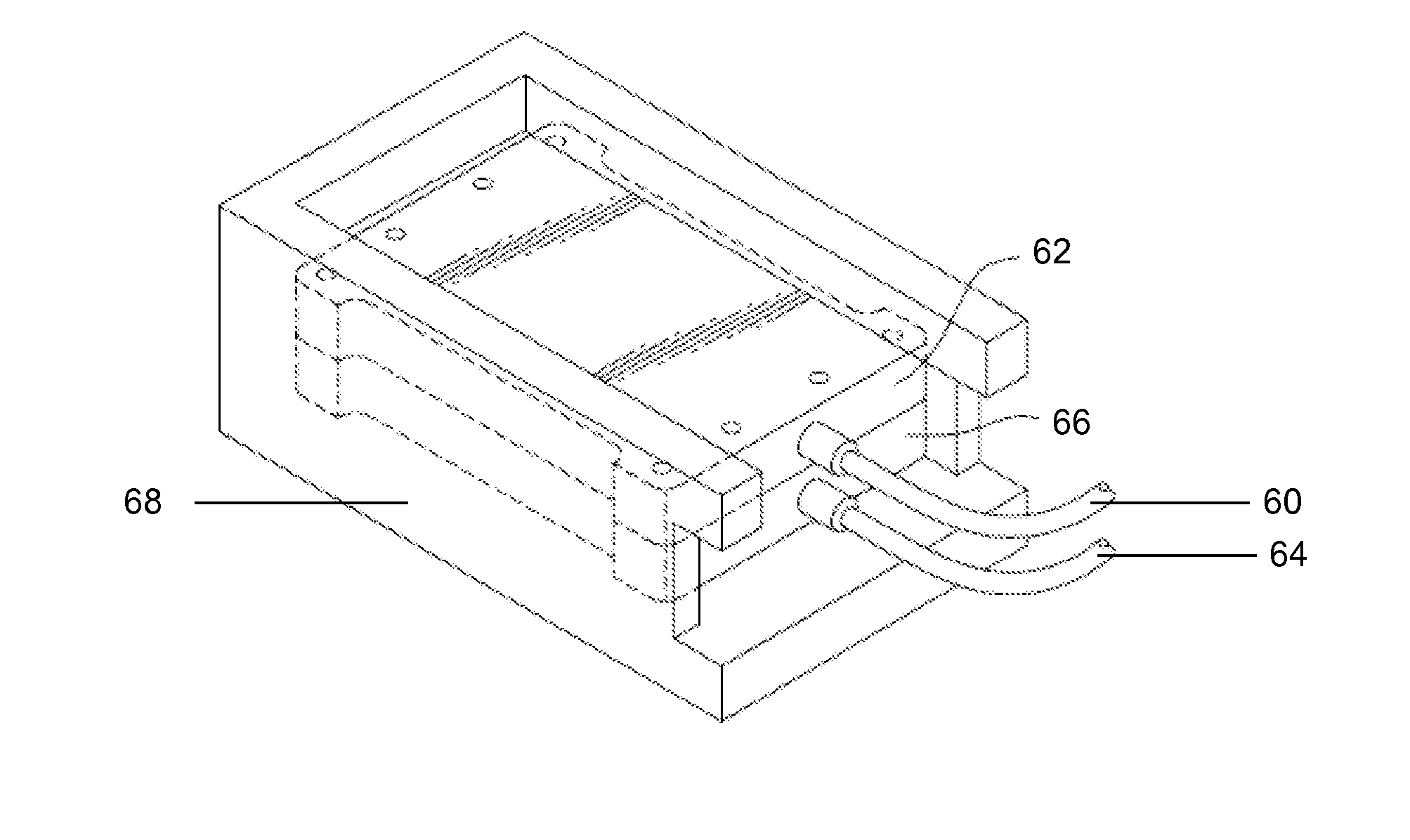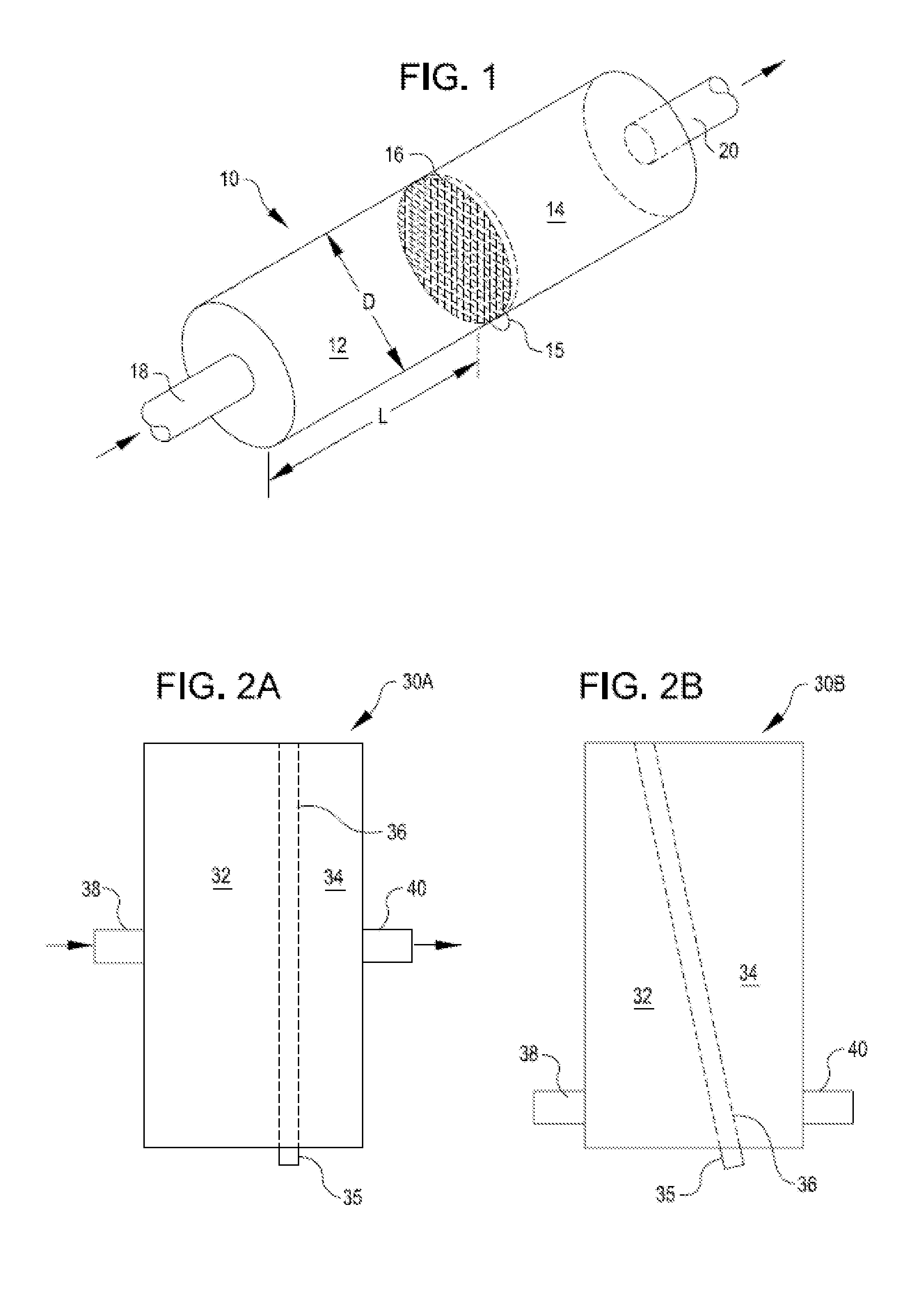[0008]In one aspect, methods and systems are provided for treating biological samples comprising both liquid and
solid materials to separate at least a portion of the
solid materials from liquids by filtration. Biological samples comprising a liquid / solids mixture may be removed from a
target site in a subject, such as by aspiration. Fluid and entrained
solid and particulate materials may be aspirated from body cavities, lumens, or the like, including blood vessels, cysts, pseudocysts, abscesses,
blood vessel grafts,
lung passages, bile ducts, ureters, urethras, fallopian tubes, ear canals, joint capsules, the
gastrointestinal tract, and the like. Alternatively, biological samples may be removed from a
target site in a subject as a substantially solid sample and mixed with a liquid, or otherwise treated to form a liquid / solids mixture, prior to treatment using a filtration device of the present invention. While plaque samples collected from blood vessels are disclosed as specific examples of biological samples collected using filtration devices disclosed herein, it will be apparent that the biological sample may comprise any type of
tissue sample, and that filtration devices of the present invention may facilitate collection and preservation of numerous types of tissue samples.
[0012]Orientation of the filtration member in a generally
vertical orientation reduces clogging of the filtration member during collection, since the solids tend to collect toward the bottom of the filtration member, while an upper portion of the filtration member remains unclogged, permitting continued liquid flow through the filtration member. Reductions in clogging of the filtration member are especially important when filtration takes place in real-time during a procedure in which tissue is removed from a patient and collected for analysis.
[0015]In another aspect, a liquid / solids mixture withdrawn from a
target site in a subject may be cooled prior to filtration. In this embodiment, a liquid / solids mixture may be actively or passively cooled during passage through a
catheter or conduit or cooled reservoir prior to filtration. Cooling a biological sample prior to filtration may assist in preventing degradation of the sample prior to filtration and may reduce the cooling requirements for filtration.
[0017]Plaque analysis is an important and sensitive tool for diagnosis and prognosis, as well as for the
early detection of beneficial adaptations in
vascular disease, and for the evaluation of potentially efficacious therapies. Since the plaque itself is the origin of most
blood biomarkers, detection in the plaque may be performed in the absence of any
dilution as is seen in the
peripheral blood. The general benefits of plaque analysis include: 1) no
dilution of biomarkers in blood; 2) characterization of the site of activity for any therapeutic intervention; 3) increased sensitivity of detection; 4) identification of novel targets for
drug development; 5) detection of changes at the earliest time point possible; and 6) a reduction in the number of subjects / patients required to evaluate a treatment or detect a
therapeutic effect, with a consequent reduction in the overall cost of therapeutic trials and of
drug development. The following table cites vascular plaque biomarkers that have been linked to cardiovascular outcomes, and was adapted from Vulnerable Plaques: A Brief Review of the Concept and Proposed Approaches to Diagnosis and Treatment. AHRQ,
Technology Assessment Program, Jan. 22, 2004.TABLE 1Studies Have BeenConducted onPopulation WithoutLaboratoryClinical OutcomeMarkerKnown CADMethodPredictedC-Reactive
Protein (hs-CRP)YesLatex-particleMI, RV,
stroke, deathenhancedimmunoassayMatrix
Metalloproteinase9 (MMP-9)NoELISADeathSoluble
Intercellular Adhesion Molecule-1YesELISAMI,
stroke, death(sICAM-1)Soluble Vascular Cellular AdhesionNoELISAMI,
stroke, deathMolecule-1(sVCAM-1)Soluble E-selection (sE-selection)YesELISAMI, stroke, deathInterleukin-6 (IL-5)YesELISAMI, deathInterleukin-18 (IL-18)NoELISAMI, deathTumor
Necrosis Factor-alpha (TNF-alpha)Nocantitative enzymeMI, deathimmunoassaySoluble CD40L (immunomodulator)YesELISAMI, stroke, death
 Login to View More
Login to View More 


